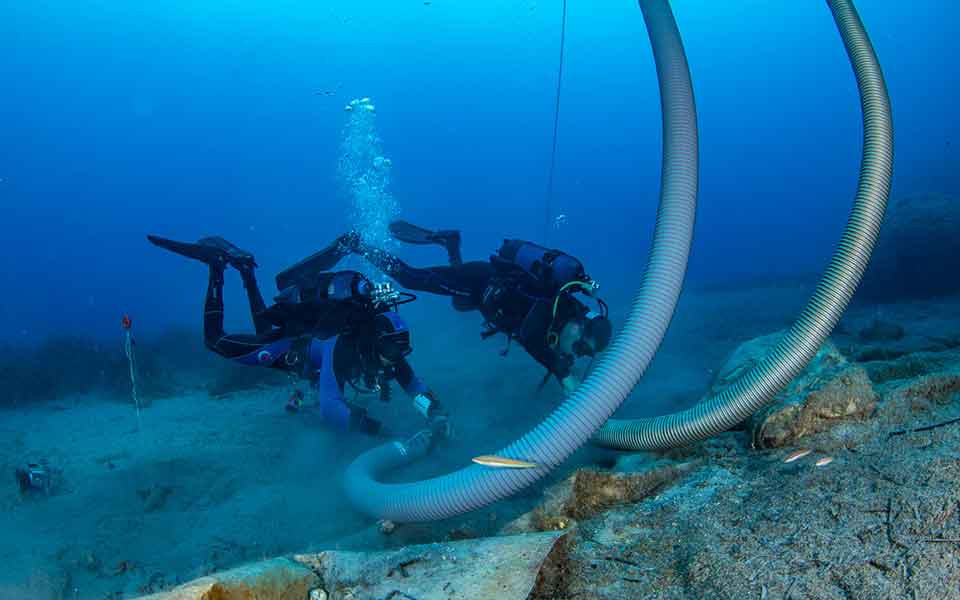The Greek Ministry of Culture has announced the results of the latest underwater investigation of the wreck of the Mentor, which sank in 1802 off the southeast coast of Kythera.
The new findings, including small personal belongings, and a detailed investigation of the ship’s hull, have shed further light on how the ship was built and what onboard life was like for the passengers and crew.
The ship was commissioned by Thomas Bruce, 7th Earl of Elgin, the then British Ambassador to the Ottoman empire, to transport antiquities from Greece to the United Kingdom at the turn of the 19th century. During this time, the diplomat was engaged in a systematic and hugely controversial campaign to remove sculptures from the monuments of the Athenian Acropolis.
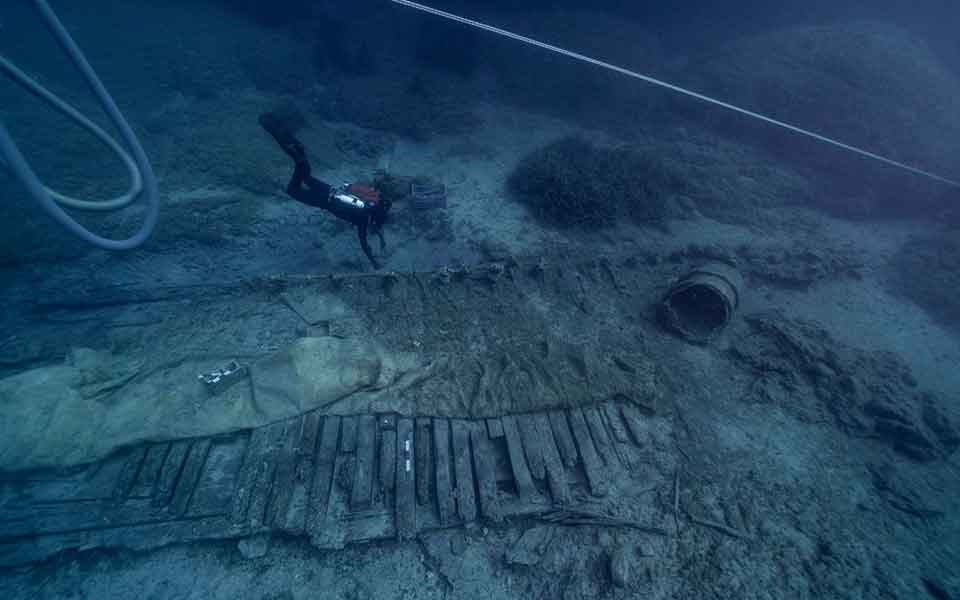
© G. Isaris / Hellenic Ministry of Culture and Sports
During the latest expedition, which took place last year, archaeologist Dimitris Kourkoumelis led a multidisciplinary team of archaeologists, marine biologists, engineers, and conservation experts to investigate the historic wreck. Two excavations were made along the remains of the ship’s hull, which lies on the seabed at a depth of 23 meters.
The first incision was made along the keel on its north side, with the aim of studying how the ship was built. Among the artifacts found trapped between the surviving timber frames were pieces of rope, items of military clothing, furniture, and a gold ring decorated with flowers.
A second incision was made on the south side of the wreck, where archaeologists discovered large pieces of copper plating, which originally functioned as an external protective layer for the hull. The underlying sections of timber were found to be in remarkably good condition, despite being on the seabed for nearly 220 years.
Among the artifacts found in this part wreck was the well-preserved base of a theodolite, a surveying instrument used for measuring angles. The object is of particular importance, as the Mentor was carrying the well-known surveyor, diplomat and antiquarian William Martin Leake (1777-1860) at the time of its sinking.
Leake, then a young officer in the Royal Artillery, spent much of his early career surveying Mediterranean seaports, traveling extensively, and developing a keen interest in antiquarian topography. The instrument most likely belonged to him and may have been used for the extensive maps and detailed observations of antiquities that he made in Greece, Turkey, Egypt and Cyprus. These drawings were subsequently lost in the sinking.
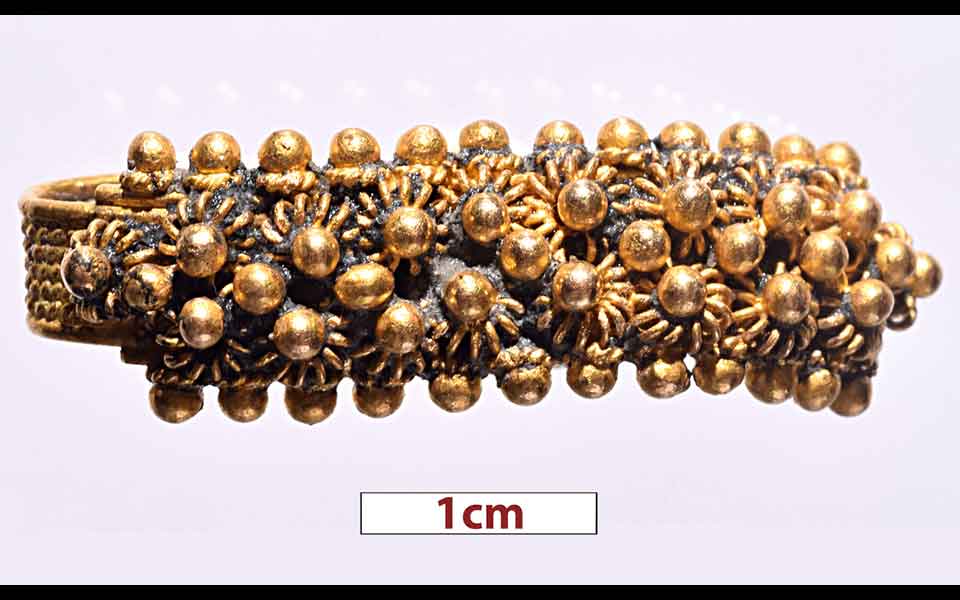
© P. Vezirtzis / Hellenic Ministry of Culture and Sports
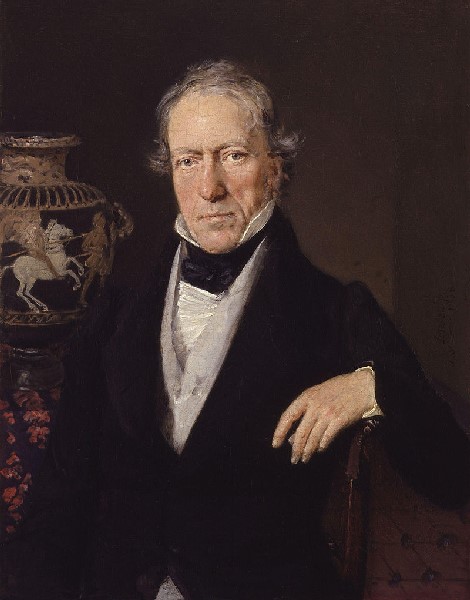
© Portrait by Christian Albrecht Jensen (ca. 1869)
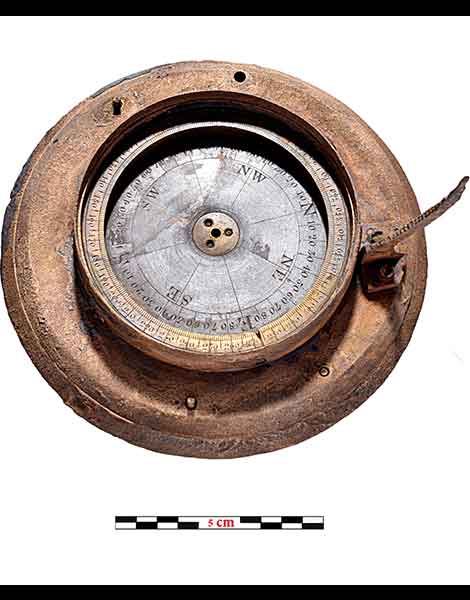
© P. Vezirtzis / Hellenic Ministry of Culture and Sports
Parthenon Marbles
The Mentor sank en route to Malta in a violent storm near the port of Avlemonas, off the southeast coast of Kythera. At the time of its sinking in September 1802, the ship was carrying 17 crates of antiquities, including elements of the Parthenon sculptures, violently dismembered from the façade of the temple by Lord Elgin over the course of the preceding year.
All 12 passengers and crew, including William Leake, were saved by a rescue boat from the nearby island, but the ship, along with its priceless cargo, sank to the bottom of the Mediterranean.
Upon hearing news of the disaster, Elgin, who was not on the Mentor at the time, scrambled to salvage the crates of antiquities by hiring a team of sponge divers from the islands of Simi and Kalymnos, renowned for their skill and expertise at deep diving. Once the marbles were recovered, Elgin had them shipped on to Malta, and then to England, where, in 1816, he sold the collection to the British Museum in London.
Since 1817, 17 marble figures from the the east and west pediments of the Parthenon, 15 of the original 92 metopes, depicting the battle between the Centaurs and Lapiths, and 75 meters of the 160-meter-long frieze have been on display at the British Museum.
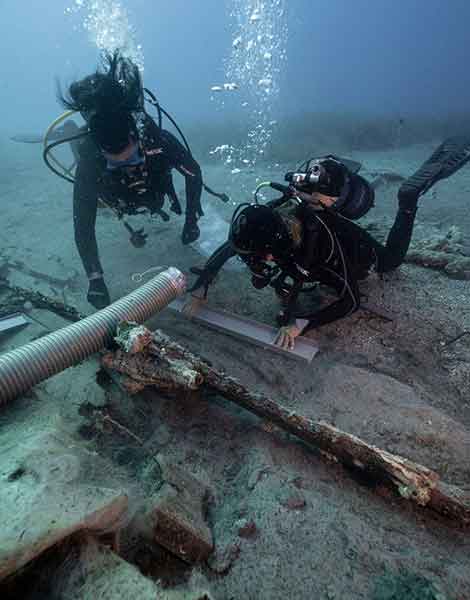
© Vassilis Tsiairis / Hellenic Ministry of Culture and Sports
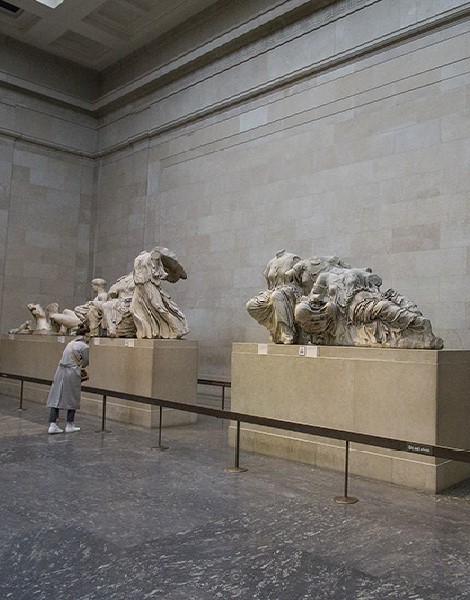
© Shutterstock
Previous research expeditions
Since 2009, members of the Greek Ephorate of Underwater Antiquities have conducted excavations at the wreck of the Mentor in the hope of uncovering antiquities that may have been missed by Elgin’s salvagers.
While no other pieces of marble statuary from the Parthenon have been found at the site, previous expeditions have uncovered a large number of personal items belonging to members of the ship’s crew and passengers, including toothbrushes, combs, golden jewelry, and items of clothing, as well as parts of the ship’s rigging and even fragments of ancient Egyptian sculptures.

